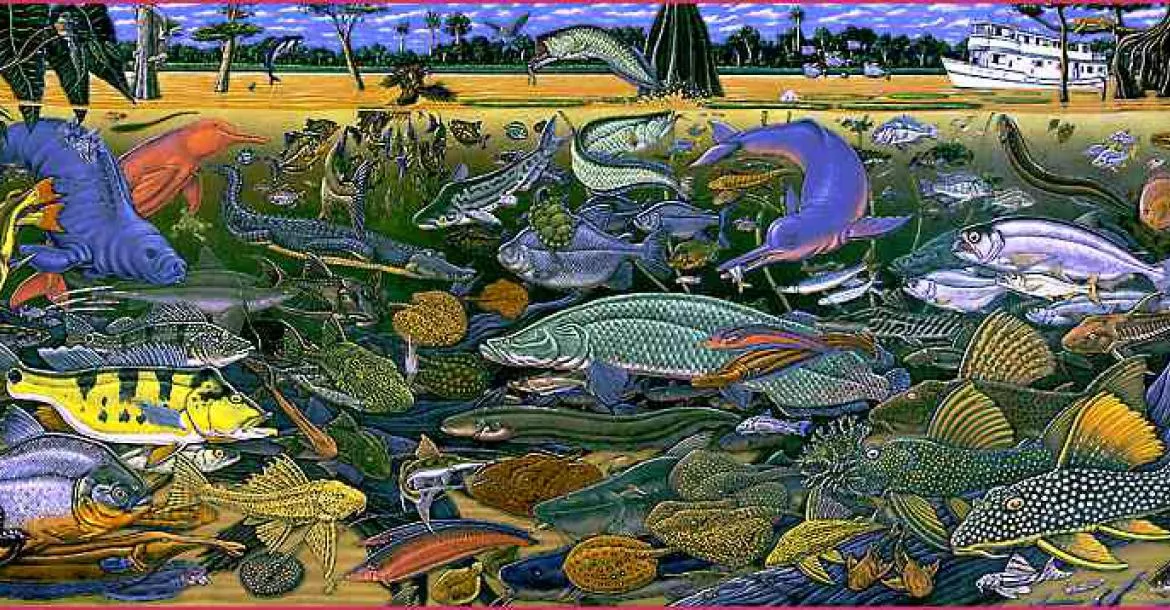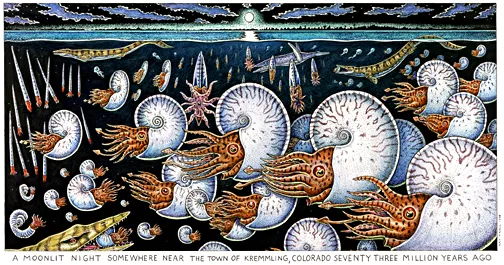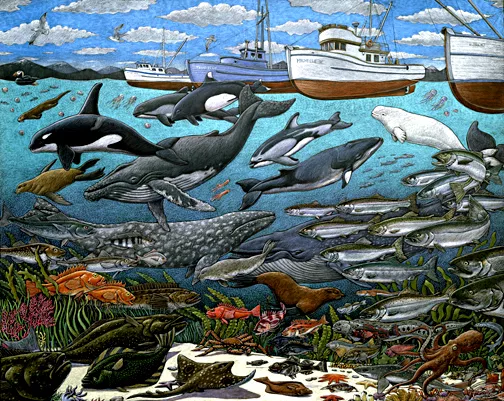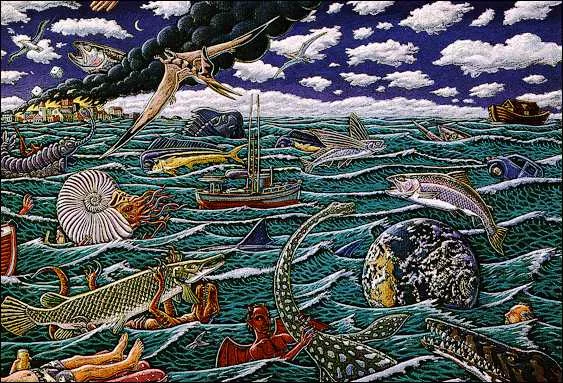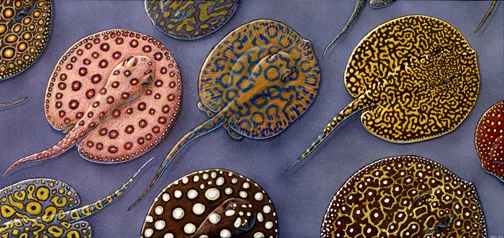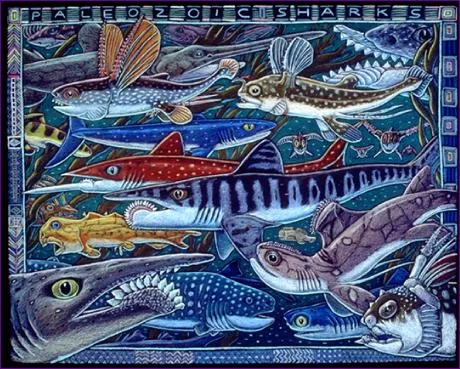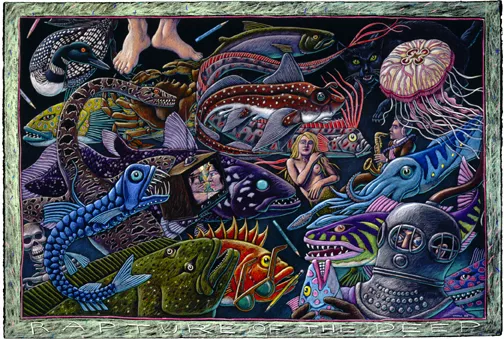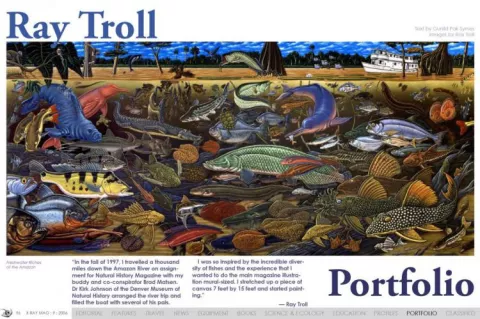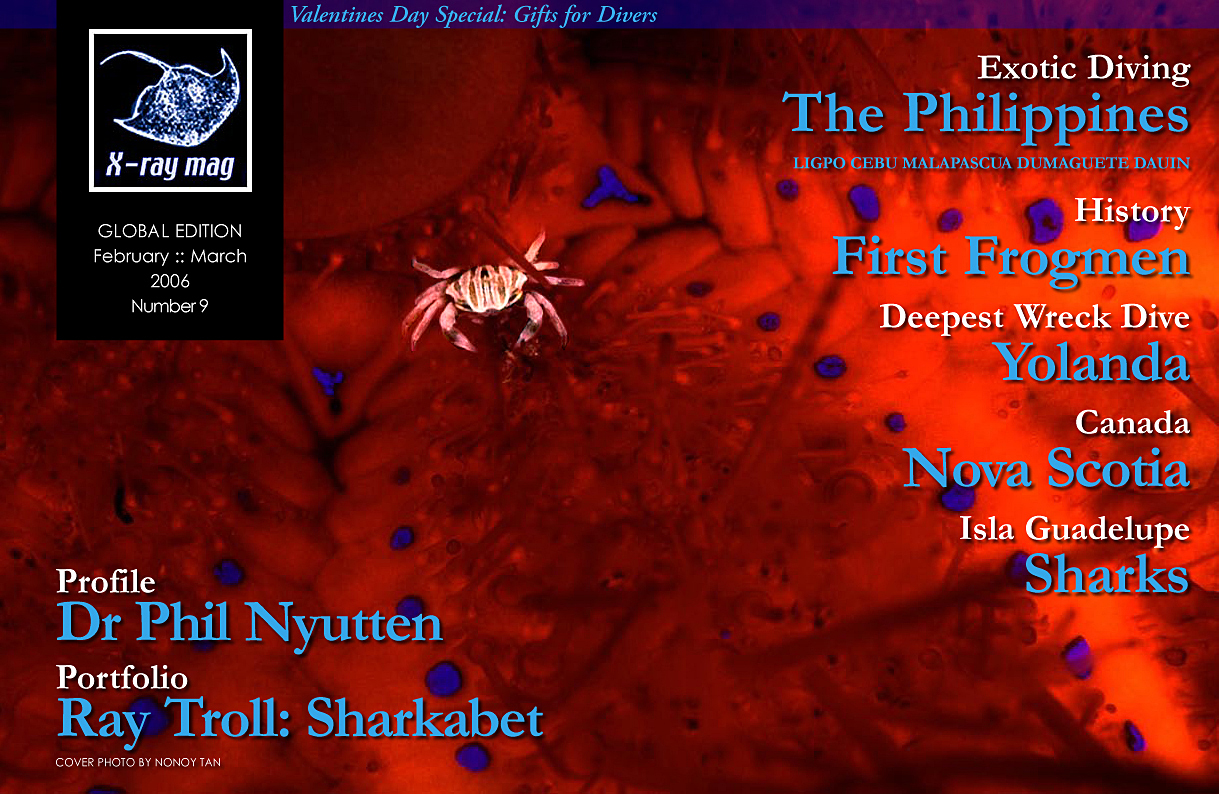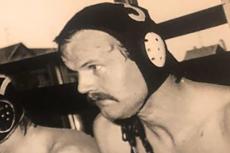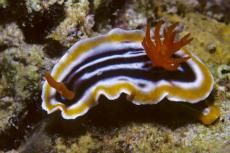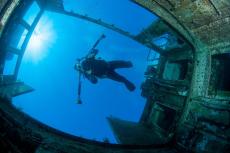
Ray Troll
Ray Troll, 51, was born in Corning, New York State, USA. His father was in the US Air Force, so his family moved quite frequently, perhaps eleven times as Ray grew up. His father moved the family to live in Japan and Puerto Rico. It was in Puerto Rico that Ray fell in love with the ocean.
Contributed by
“I was 10-13 years old, when we moved there from Pennsylvania and plunked down in a tropical island,” said Ray Troll, “We lived in a house on a cliff right above the ocean. I’d hop over the fence and hike down to the beach, look at the tide pools and poke around at the fish.”
Ray always knew he would become an artist when he grew up. His art career started at age four or five when he would make his own creations with whatever materials laid around the house. He graduated from high school and college in Kansas and finished his graduate education in studio art and painting at Washington State University. Now, he works primarily with drawing materials, a lot of coloured pencil. Ray said, “It’s faster and easier to think with pencil.” But he likes to change medium now and then, switching from linoleum block prints to acrylics and back to drawing materials.
In 1983, Ray went to Alaska to work at his sister’s fish store on the dock for the summer. As he sold fish and handled them all day long, he started observing them carefully. Fish had always appeared in his artwork, but in a lesser role and rendered very stylistically. As the artist looked closer and closer at the fish he handled, the more interesting they became to him. And so did Alaska, where he still lives to this day.
“In the fall of 1997, I travelled a thousand miles down the Amazon River on assignment for Natural History Magazine with my buddy and co-conspirator Brad Matsen. Dr Kirk Johnson of the Denver Museum of Natural History arranged the river trip and filled the boat with several of his pals," said Ray. "I was so inspired by the incredible diversity of fishes and the experience that I wanted to do the main magazine illustration mural-sized. I stretched up a piece of canvas 7 feet by 15 feet and started painting.”
Ancient fish
Ray said his first love in life was dinosaurs, like any five-year-old boy at the time. When he became interested in fish, he quickly realized that the material in books about ancient fish was minimal. So, Ray visited museums and unexplored niches to find out more about old fish. Ray said, “I followed the trail that others had who studied these animals.” Soon, he was talking to leading experts and researchers in the field to get more information about certain extinct fish species.
In Ray’s investigation of ancient fishes, the Helicoprion, or Whorl Tooth Shark, captured his imagination. Ray said, “I thought the spiral of the mouth of this shark was beautiful.” He pursued the trail of this ancient fish to Dr Svend Erik Bendix-Almgreen, a Danish researcher who is one of the foremost experts on the species. Ray realized that not many people knew very much about this ancient shark species and decided to put a face on the fossil record. Once created, he sent it to Dr Bendix-Almgreen who approved of the rendering. Even though all science has is the head of the fossil, Ray was able to put a relatively realistic body to the face with research on similar species.
Ray’s fascination for sharks, ancient and present-day, led to a children’s book and museum exhibit entitled Sharkabet: A sea of sharks from A to Z, which was on display in 2005 at the Miami Museum of Science in Florida, USA, and eight other museum venues in the United Sates over 5 years.
Going under
Ray does some snorkelling to get a better look at the fish. He wanted to learn scuba diving, but his ears prevented him from continuing down that road. Now, he hopes to get the chance to get inside a submersible, so he can study up close and personal, the fantastic underwater life that fascinates him without risking the health of his ears.
In 1997, Ray got a chance to see a whole other world of underwater life in Brazil. There, he found a great variety of new fish to gawk at and study for future paintings. Ray said, “The water is red. It’s like snorkelling in red wine. Very surreal-looking. The red comes from the tannin from the bark of the trees. What’s so amazing is there are different colour waters in each tributary. The Rio Negro is the clear part, but at other points, it is deep, deep brown, super bright red, with white sandy beaches, or there are places where the bottom is covered with leaves like a big leaf bank.”
Ray was there three times for about two and half weeks each. Ray found interesting and dangerous critters to study. Electric eels were some. “They like the clear water too. It’s just so beautiful. But wait a minute, there are electric eels!” said Ray. He had a close encounter with an electric eel. “No, I wasn’t hurt, but you tend to swim away very quickly.”
Ray and his team took early morning snorkelling dives where he found armoured catfish. “There are so many variations of them. They look very ancient. They almost look like a trilobites. They are not the fastest fish around, so it is easy to get a good look at them,” said Ray.
A Fish called Troll?
In 2002, Ray had the dubious honour of having a ratfish species named after him by Dr Dominique Didier Dagit.
”Every now and then you come across a fish that just doesn’t look like the rest. And so you just trust the visual sense. I am pretty drawn to that. It’s just different. When I first caught one, I thought to myself, ‘What the heck is that?’ said Ray. The research trail led Ray to the expert on ratfish, ‘Dr Dominique’, who is the world expert on chimeras. “I got to be friends with her and we ended up doing rap songs about ratfish,” Ray said.
Through researching the ratfish, which is a distant relative of the shark, Ray found out that the ratfish dates back 350 million years. “And they’re still around!” exclaimed Ray. He spread the word and images of ratfish to anyone who would look or listen. “So, to reward me for raising awareness about ratfish around the world, she named a species after me,” said Ray. Dr Dominique named the ratfish, Hydrolagus trolli, which is unique for its lavender colour and longer than average nose according to the expert. It was found 3,000 feet (1000m) off the coasts of New Caledonia and New Zealand.
”What’s cool about ratfish is that they look like a science experiment gone wrong,” said Ray. He is fascinated with how old the species really is. He said that most fish are recent arrivals in comparison, even the shark, which most people consider very old indeed, actually evolved after the dinosaurs, but ratfish, well, they have been around a lot longer. “Ratfish are virtually unchanged,” said Ray, “They are like visitors from another world.”
About the art
”I always love working from first hand experience. I am somewhat limited, and I would like to get into a submersible someday. I snorkel and I fish where I live here in Ketchikan. I am looking at the Pacific from here right now where I sit. But through my relationships with scientists and commercial fishermen, I am able to learn more about the deep. The fascination with the unknown is what drives us on. What about this and what about that.. Following your nose, as we say…
“While I respect really good scientific illustration, I like to bring a message into my work and engage my emotions and bring other things to it. A little bit of philosophy and mystery makes the image that you glance at make you want to know more. That is what good art does. It asks the questions and makes you look at it more closely and think about it,” said Ray.
What’s next?
Ray is off to the Florida Keys to swim with hammerheads. He was invited by Dr Jose Castro to seek out the creatures and learn more about them. Ray said if he lives through the experience, he’ll have more to say about the sharks he loves and share images to capture the imagination as well. ■
Find t-shirts printed with Ray Troll's paintings at his online store where you can also buy prints, posters, books, gifts and shark game cards directly from the artist. Visit: www.trollart.com
Published in
-
X-Ray Mag #9
- Læs mere om X-Ray Mag #9
- Log ind for at skrive kommentarer
- Log ind for at skrive kommentarer
